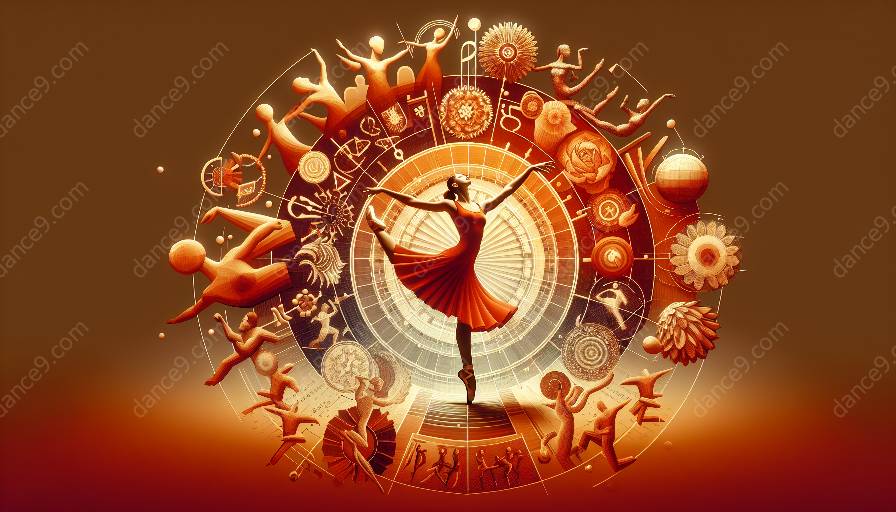In diverse cultures around the world, dance has been closely intertwined with ritual and religious practices, offering a rich tapestry of traditions that provide insights into the human experience. This topic cluster delves into the intricate connections between dance, ritual, and religious practices while considering the perspectives of dance anthropology and dance studies.
Dance as a Form of Ritual and Expression
Dance has served as a significant form of ritual and expression across various cultures throughout history. In many societies, dance plays a crucial role in religious ceremonies, seasonal celebrations, and rites of passage. The movements, gestures, and symbolism embedded within dance sequences often carry deep spiritual and cultural significance, serving as a means to communicate with deities, honor ancestors, and express communal identity.
Dance Anthropology Perspective
From a dance anthropology perspective, the study of these rituals and religious dances offers a unique lens through which to understand the cultural, social, and historical contexts of diverse communities. By examining the choreographic patterns, mythological narratives, and traditional costumes associated with these dances, dance anthropologists can trace the evolution of religious practices and their interconnectedness with local customs and belief systems. This approach helps illuminate the ways in which dance serves as a living embodiment of cultural heritage and spiritual beliefs.
Dance Studies Perspective
From the vantage point of dance studies, the exploration of dance in the context of ritual and religious practices provides valuable insights into the embodied experiences of participants. Scholars in dance studies analyze the physical, emotional, and symbolic dimensions of dance as it pertains to religious rituals, shedding light on the transformative effects of movement on individuals and communities. By examining the role of dance in mediating spiritual experiences and fostering communal cohesion, dance studies contribute to a deeper understanding of the performative and interactive elements embedded within religious dance traditions.
Dynamic Cultural Variations
One of the most intriguing aspects of the connections between dance, ritual, and religious practices is the dynamic range of cultural variations that exist worldwide. From the exuberant whirling dervishes of Sufi Islamic ceremonies to the hypnotic sacred dances of the Afro-Brazilian Candomblé traditions, each cultural context offers a unique tapestry of movements and gestures that reflect the specific cosmologies, belief systems, and historical narratives of the community. The diverse manifestations of religious dance underscore the fluidity and adaptability of dance forms in response to local contexts and spiritual expressions.
Intersecting Symbolism and Meaning
Across different cultures, dance serves as a vehicle for conveying intersecting symbolism and meaning within religious contexts. Whether in the ritualistic footwork of Indian classical dance, the reverent gestures of Classical Chinese dance, or the ecstatic twirls of Sufi mystical dance, each movement holds layers of symbolic significance that communicate narratives of creation, transcendence, and divine connection. The integration of music, costumes, and ritual props further amplifies the multisensory experience, encapsulating the spiritual ethos and cultural identity of the practitioners.
Impact and Continuity
The impact of dance in religious and ritualistic settings extends beyond mere performance, influencing the continuity and preservation of cultural traditions. By engaging in religious dances, practitioners actively participate in the transmission of ancestral knowledge, spiritual wisdom, and communal values across generations. This continuity not only sustains the vibrancy of cultural practices but also reinforces the collective memory and identity of communities, thereby demonstrating the enduring significance of dance as a conduit for spiritual and cultural heritage.
Contemporary Relevance and Adaptation
In contemporary societies, the connections between dance, ritual, and religious practices continue to evolve, reflecting the adaptability of traditions in response to changing social dynamics and globalization. While some traditional religious dances remain deeply rooted in their original forms, others undergo reinterpretation and fusion with modern artistic expressions, thereby shaping new narratives of spiritual experience. These adaptations underscore the resilience and relevance of dance in sustaining the sacred and communal dimensions of religious practices amidst shifting cultural landscapes.
Conclusion
The connections between dance, ritual, and religious practices in different cultures offer a multifaceted tapestry of traditions that reflect the deep interplay of spirituality, cultural expression, and embodied knowledge. Through the lenses of dance anthropology and dance studies, scholars and enthusiasts can gain profound insights into the diverse ways in which dance serves as a living repository of human experiences, offering a powerful conduit for the exploration of ritual, religious beliefs, and communal bonds.

















